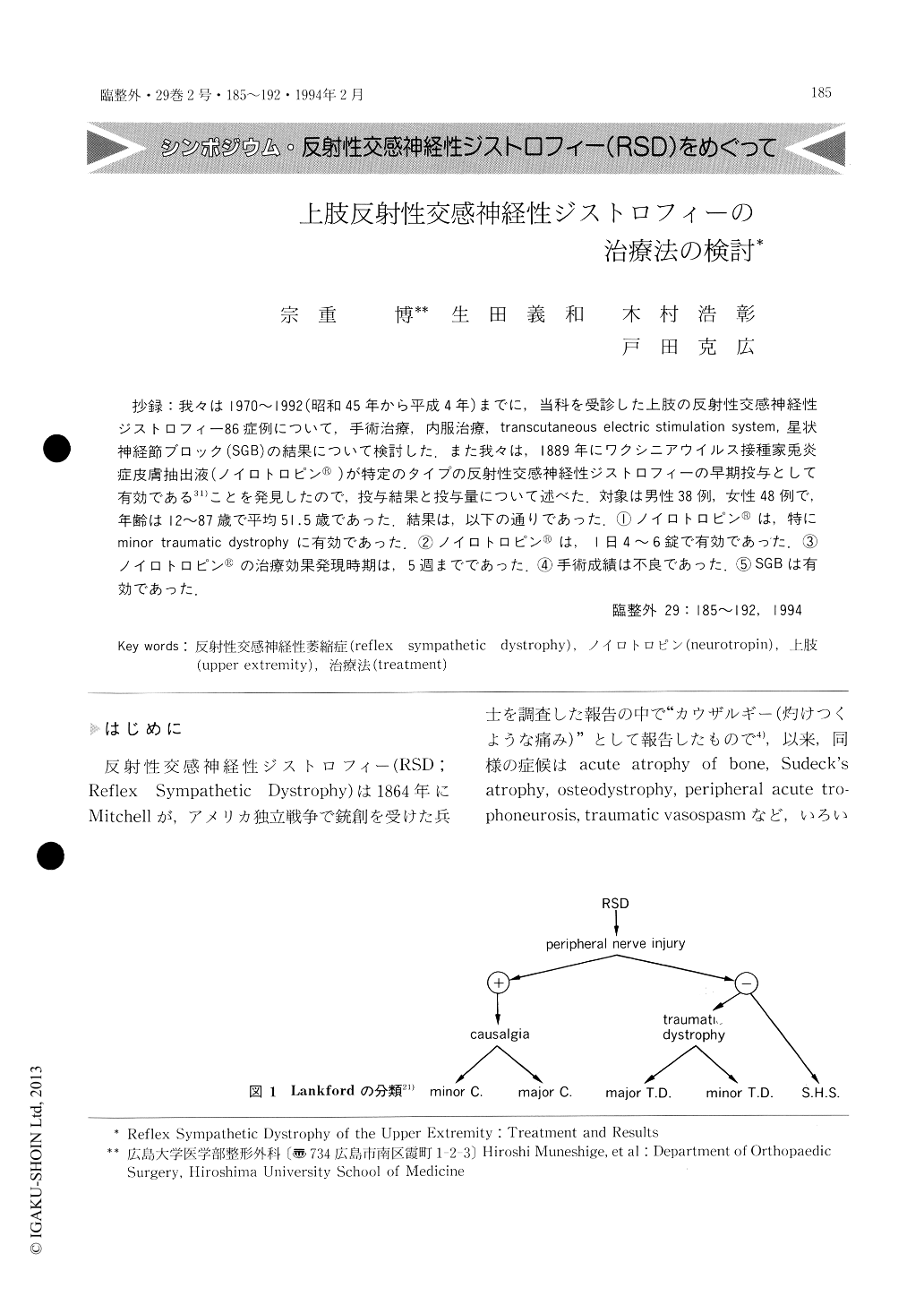1 0 0 0 OA 肘離断性骨軟骨炎に対する骨釘移植術の適応と限界
- 著者
- 村田 英明 村上 恒二 宗重 博 浜田 宣和 天野 幹三 山本 健之 生田 義和
- 出版者
- Japanese Society for Joint Diseases
- 雑誌
- 日本リウマチ・関節外科学会雑誌 (ISSN:02873214)
- 巻号頁・発行日
- vol.12, no.3, pp.273-282, 1993-12-20 (Released:2010-10-07)
- 参考文献数
- 13
To study the effectiveness of bone peg graft from the ulna for osteochondritis dissecans of the elbow joint, we analyzed 16 patients with bone peg graft who had various types of preoperative and postoperative findings. All the cases were baseball players except for one volleyball player. The onset ages ranged from 10 to 16 years (mean 11.2), and the periods from then to the operation from 5 to 72 months (mean 2.6 years) . The follow-up periods were from 12 to 29 months (mean 20 months) . Based on Minami's X-P classification, 8 cases were categorized into the stage of fragmentation and 8 into the stage of isolation. Patients were also classified with respect to the osteochondral lesion found during operation; 9 were without abrasion of the lesion or, if with it, without invasion of fibrocartilage into the lesion and were classified into Type 1. The 7 in which the osteochondral lesion was unstable due to the invasion of fibrocartilage were classified as Type 2. The results with regard to postoperative X-P were classified as excellent when the osteochondral lesion was repaired anatomically, as ‘good’ when the lesion was under repair and the osteosclerotic halo of the capitulum had disappeared, and as ‘poor’ when the halo remained. As a result, 7 Type 1 cases (78%) were excellent and 2 cases (22%) good, while one Type 2 case (14%) was excellent, 4 (57%) were good and 2 (29%) were poor. All patients were clinically not symptomatic and were satisfied with the surgery. We emphasized that bone peg graft could be indicated in all cases of osteochondral dissecans of the elbow joint and that there were difficulties in repairing osteochondral lesion in Type 2 (unstable) cases.
1 0 0 0 上肢反射性交感神経性ジストロフィーの治療法の検討
- 著者
- 宗重 博 生田 義和 木村 浩彰 戸田 克広
- 出版者
- 医学書院
- 雑誌
- 臨床整形外科 (ISSN:05570433)
- 巻号頁・発行日
- vol.29, no.2, pp.185-192, 1994-02-25
抄録:我々は1970~1992(昭和45年から平成4年)までに,当科を受診した上肢の反射性交感神経性ジストロフィー86症例について,手術治療,内服治療,transcutaneous electric stimulation system,星状神経節ブロック(SGB)の結果について検討した.また我々は,1889年にワクシニアウイルス接種家兎炎症皮膚抽出液(ノイロトロピン®)が特定のタイプの反射性交感神経性ジストロフィーの早期投与として有効である31)ことを発見したので,投与結果と投与量について述べた.対象は男性38例,女性48例で,年齢は12~87歳で平均51.5歳であった.結果は,以下の通りであった.①ノイロトロピン®は,特にminor traumatic dystrophyに有効であった.②ノイロトロピン®は,1日4~6錠で有効であつた.③ノイロトロピン®の治療効果発現時期は,5週までであった.④手術成績は不良であった.⑤SGBは有効であった.
